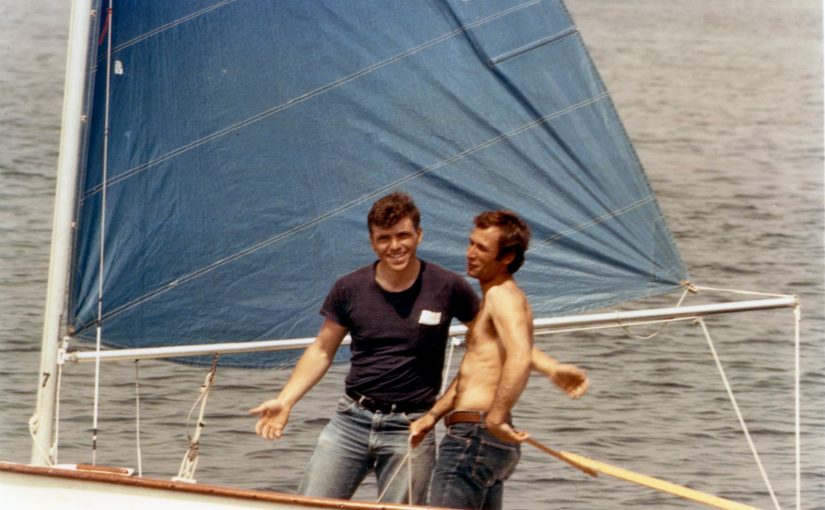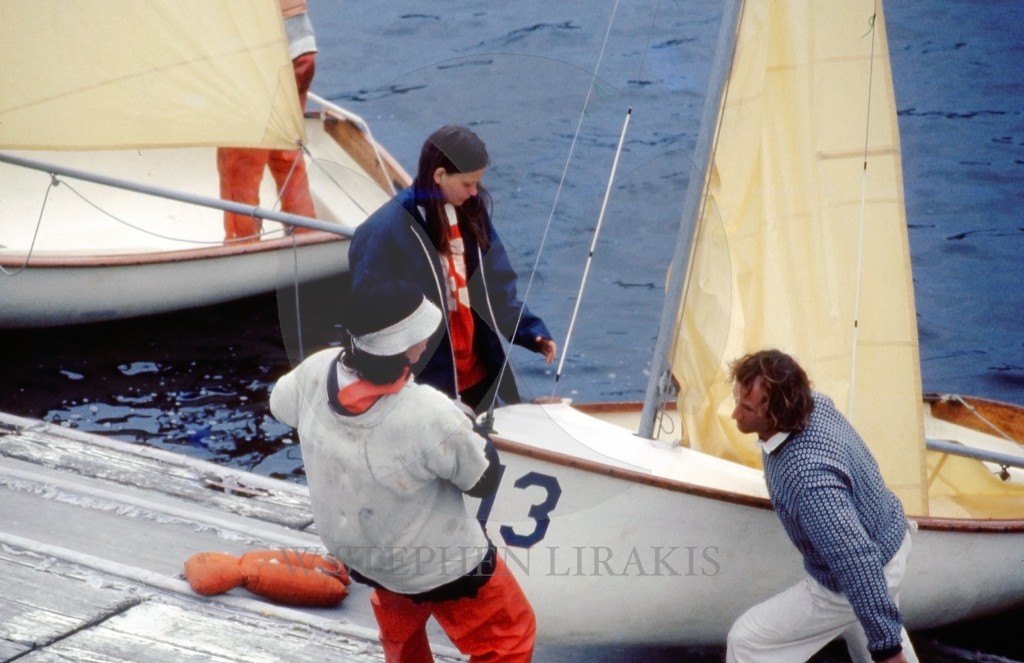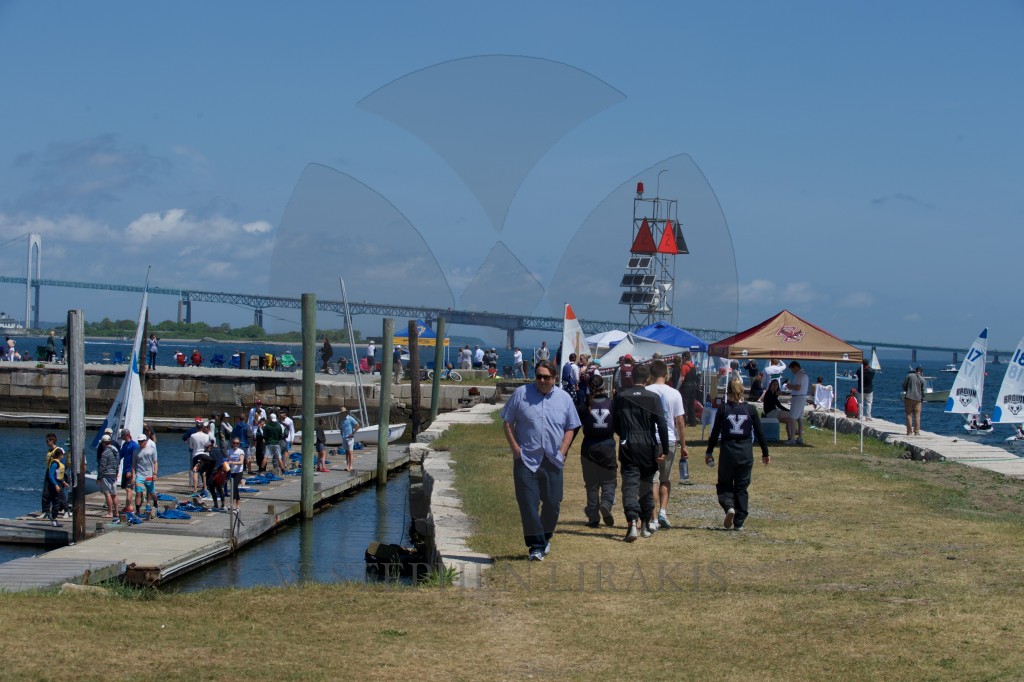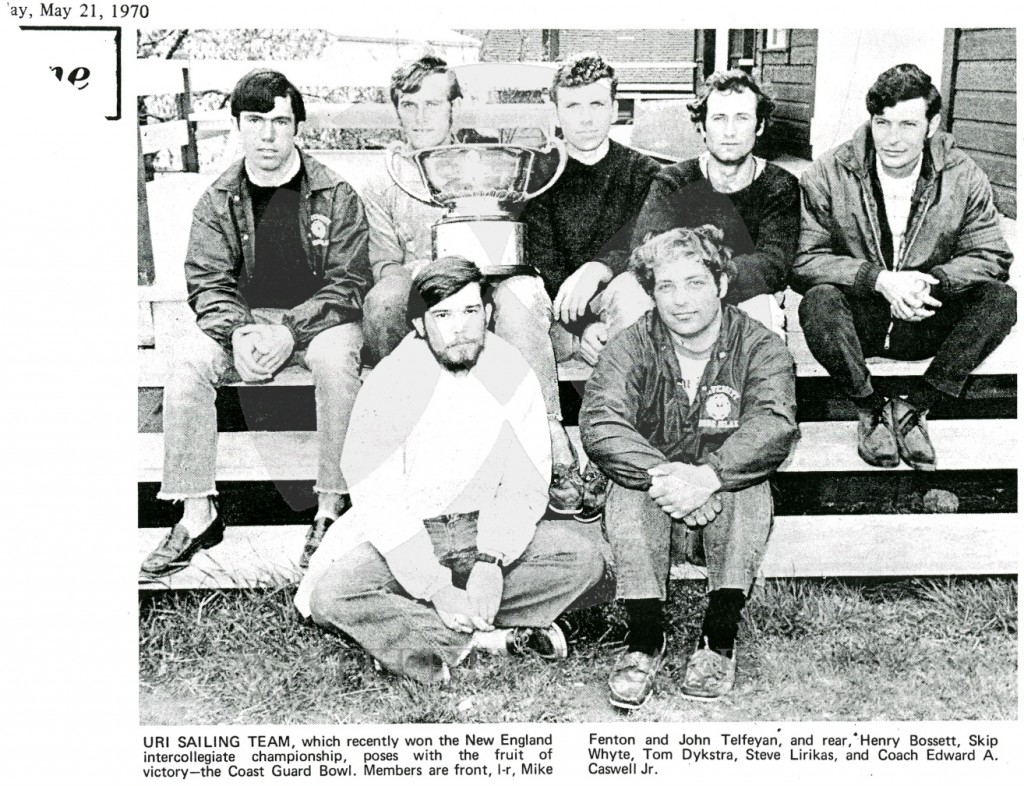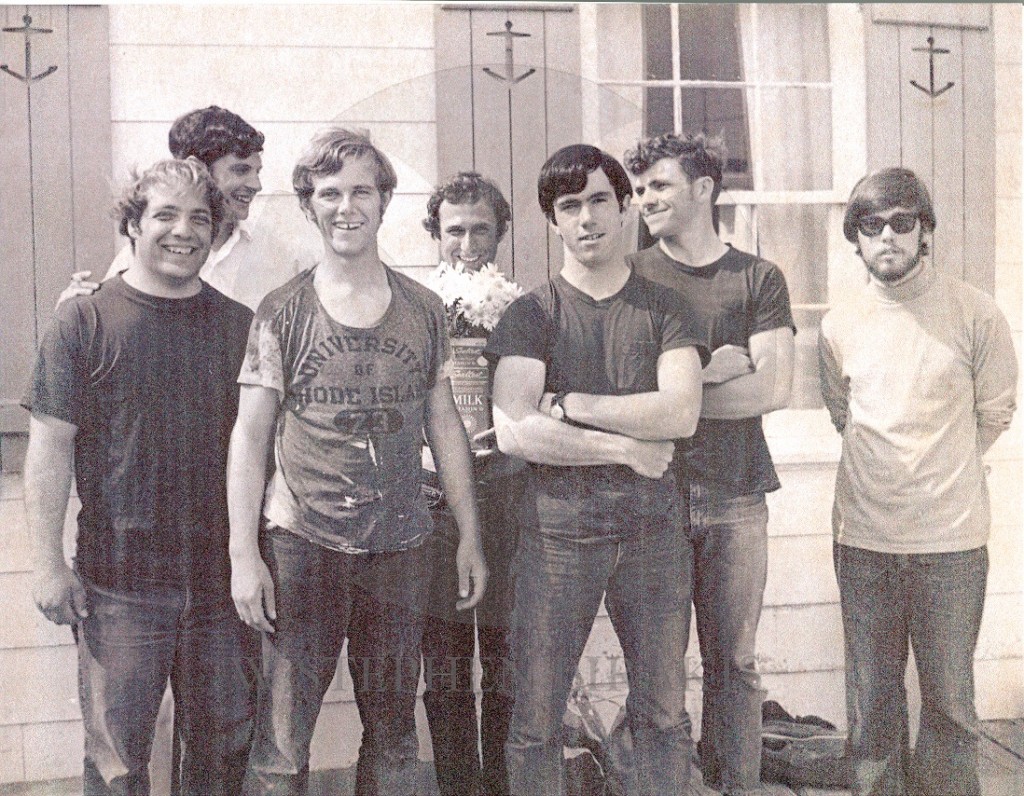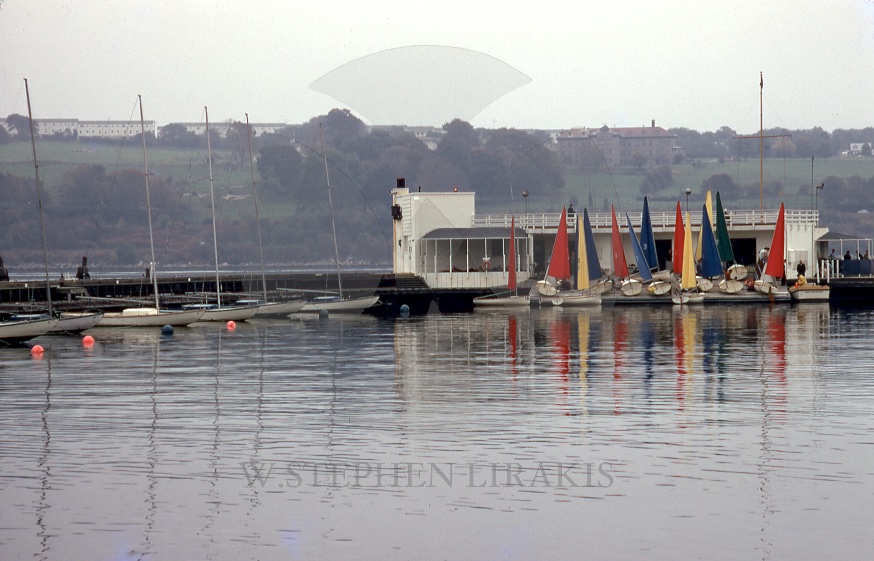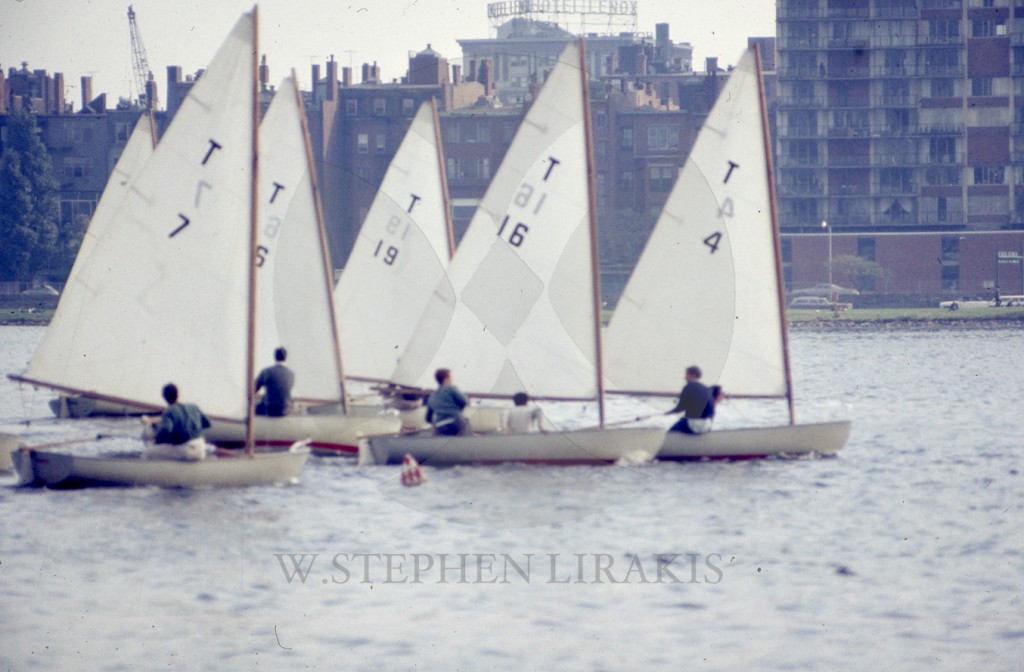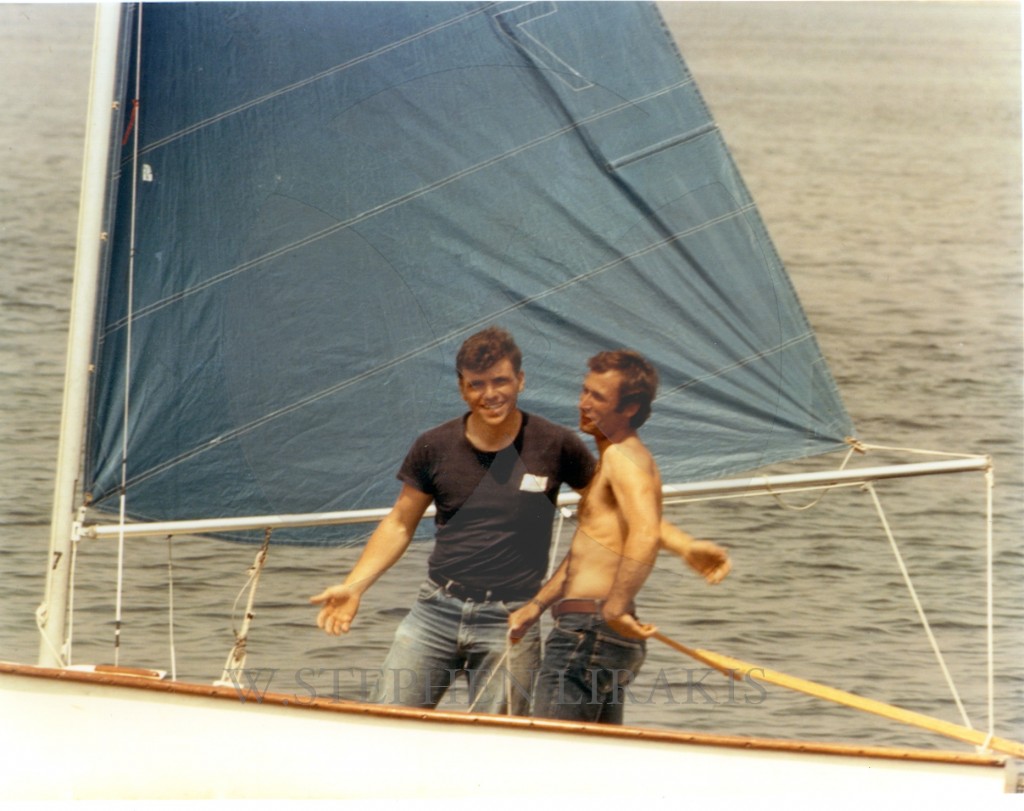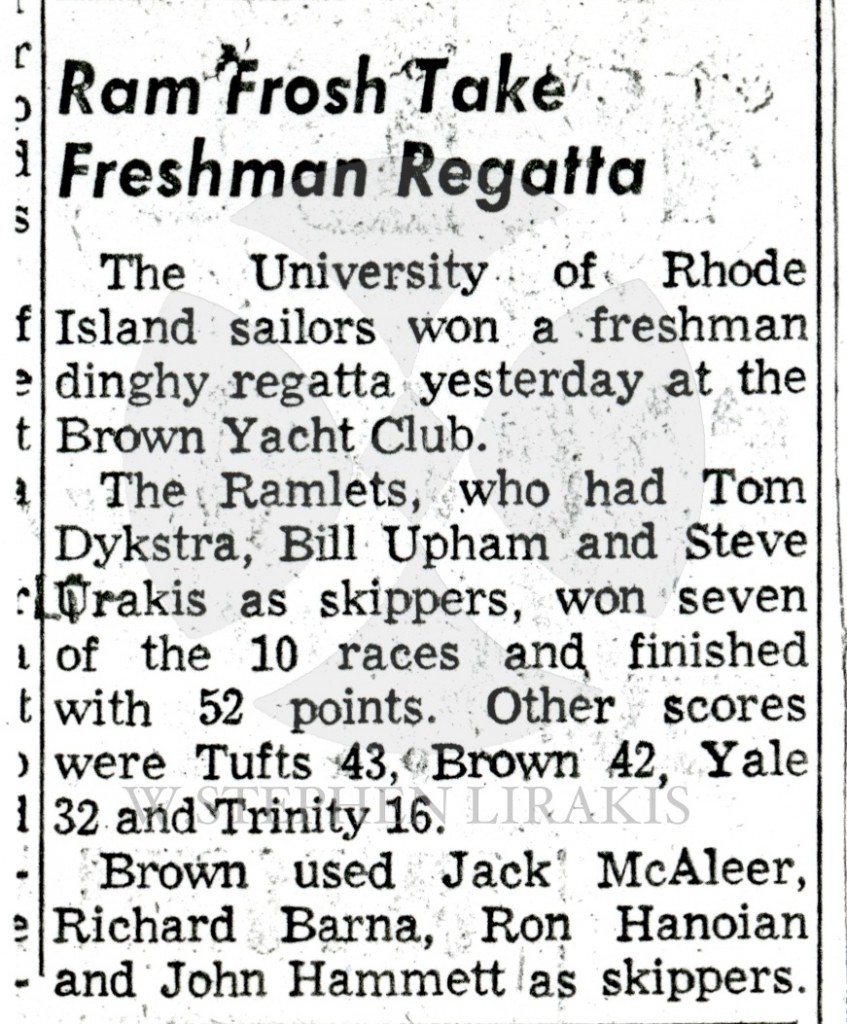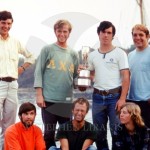I assembled this a few years ago because even I forget some of the boats and events I sailed. Still fond memories; and still making more.
Category: college sailing
THE COLLEGE YEAR: SAILING
My fondest memories of college life are really are those of sailing and the broad community of all the colleges we competed against.
The format that of exciting sailing which afforded the opportunity to develop and sharpen our skills; but I am still racing with or against many of those I knew in college.

JOE DUPLIN
College sailing remains a fond memory; and Joe Duplin was very much a part of those memories, while he was coach of the Tufts sailing team. Anecdotes of Joe Duplin abound.
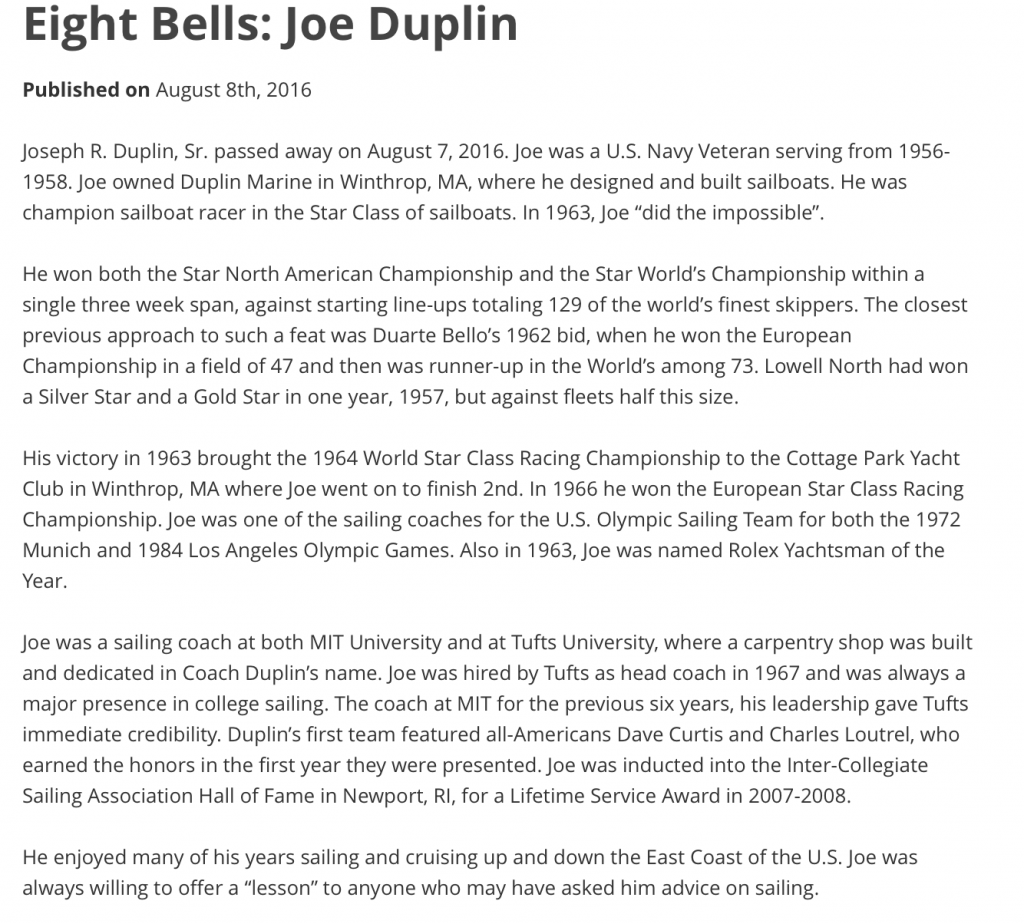
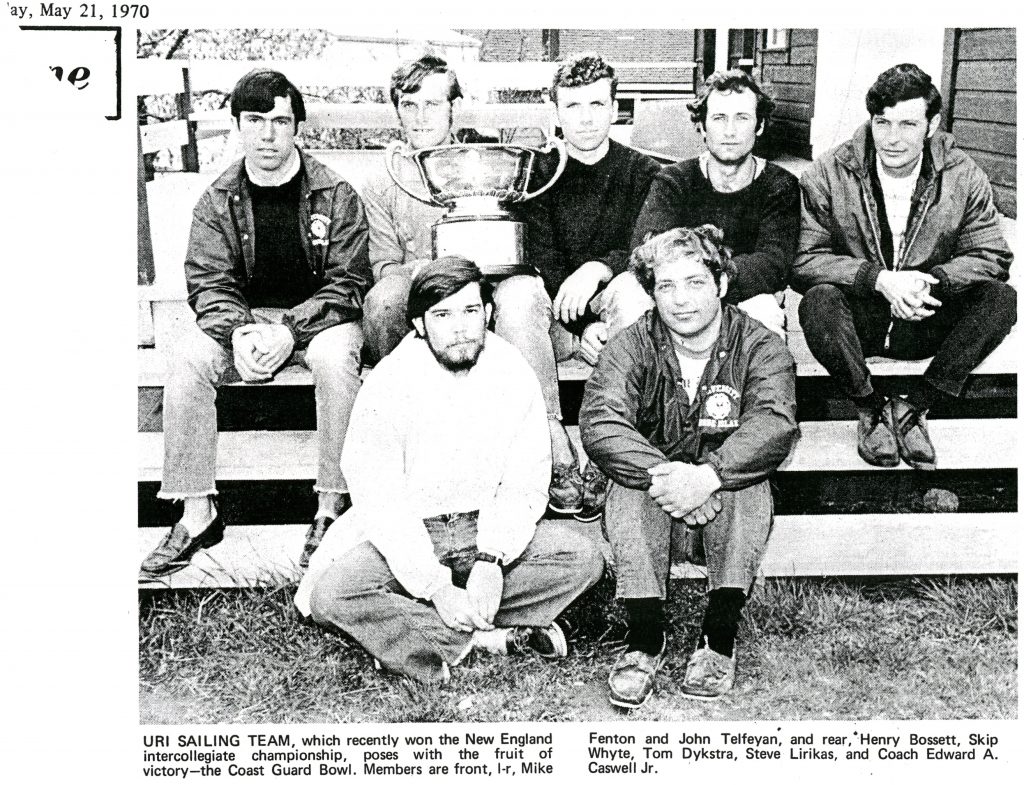

THE WAY WE WERE
I recently attended my 50th class reunion at St. George’s School. Everyone who could came; I think suddenly happy to be able to be seen.
No less, college memories are now distant memories. Blaze Starr was one. We were sailing at the Naval Academy in Annapolis. After dinner we headed for the “Block” in Baltimore. The photo of Blaze is the only proof I have that we were actually there.
Blaze Starr, Burlesque Stripper Linked to a Governor, Dies at 83
By ASHLEY SOUTHALLJUNE 16, 2015
Blaze Starr in New Orleans in 1959. Credit Associated Press
Blaze Starr, the voluptuous stripper who became one of the most famous burlesque performers in America, and whose affair with a Louisiana governor was the basis of a movie, died on Monday at home in Wilsondale, W.Va. She was 83.
She was pronounced dead at a nearby hospital, her nephew, Earsten Spaulding, said. In recent years, she had heart problems and underwent bypass surgeries, he said. She had been in pain on Sunday, he added, but she refused to go to the hospital after she began feeling better.
Ms. Starr, with a head full of red hair, an ample bosom and a penchant for playful humor, stoked the fantasies of her legions of admirers from the runways of burlesque clubs across the country for more than 30 years, seducing many men along the way.
Her most famous affair, with Gov. Earl K. Long of Louisiana, produced a scandal that was the basis for the 1989 film, “Blaze,” starring Paul Newman and Lolita Davidovich. The film was based on her memoir, “Blaze Starr: My Life as Told to Huey Perry,” published in 1974.
One of 11 children, she was born Fannie Belle Fleming on April 10, 1932, in Wilsondale, W.Va. As a child, she worked washing laundry for $1 a day.
In 1947, she traded a life in the coal fields and got on a bus to Washington, D.C., to pursue a career as a country singer. While working at a Mayflower Doughnut Shop, she met a promoter who convinced her to become a stripper instead.
At age 15, Ms. Starr began performing at a club near the Marine Corps base in Quantico, Va., before moving to Baltimore, where in 1950, she stepped onto the runway of the 2 O’Clock Club on the Block, a famous strip of adult entertainment shops and venues.
She gained national recognition in 1954, when she was featured in Esquire magazine, and continued performing for more than 30 years before hanging up her G-string and pasties in the 1980s to become a gemologist. She made jewelry, which she sold at a mall in suburban Baltimore.
Reflecting on her career as a stripper, she told The Baltimore Sun in 2010: “Honey, I loved it. But everything has its season.”
On stage, she often delighted crowds with the way she would tuck a rose between her bosom and blow the petals across her chest. Sometimes, she stretched out on a couch, wiggling and looking seductive while removing her garments. When she got to the last pieces, smoke emerged from between her legs, triggering laughter from the crowd.
She met Governor Long while performing at the Sho-Bar in New Orleans in 1959. She recalled their affair in her memoir, and also claimed to have had an affair with President John F. Kennedy after he attended one of her shows.
In an interview with People Magazine in 1989, she said she had stopped performing burlesque because it had become too raunchy.
Ms. Starr was married to Carroll Glorioso, the owner of the 2 O’Clock Club, for 12 years before they divorced.
Her survivors include five sisters: Betty June Shrader, Debbie Fleming, Berta Gail Browning, Mary Jane Davis and Judy Maynard; one brother, John Fleming; and a host of nieces and nephews.
In a short video profile filmed before the movie was released, Ms. Starr was asked whether she would change anything about her life.
“Not a thing,” she responded. “I would just do a lot more of it and try a lot harder, and seduce a lot more men than I did.”
THE WAY WE WERE, COLLEGE SAILING
Salve Regina and Brown University are hosting the intercollegiate sailing championships over almost three weeks. The women’s championships just finished. the Team racing has just started. I have always had a soft spot for team racing. College sailing remains one of my fondest memories.
I am struck by the contrast in outfits worn by the teams; demonstrated by the photos. I was surprised by the amount of gear for sail at the event. We had neither the money nor the inclination to dress alike.
SAILING THROUGH LIFE
This is in response to those who asked:”Who are you?” It is a least a dimension.Boats have always been a part of my life. Naturally interwoven with the story of Newport.
COLLEGE SAILING; NEW RULES
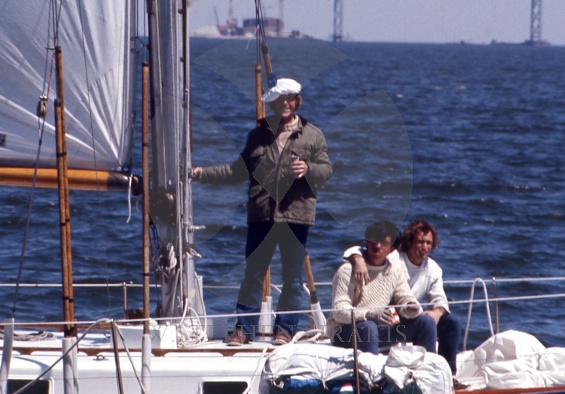
By Airwaves Writer Lydia Whiteford

Sail1Design welcomes your thoughts in our forum at the bottom of this article. Enjoy.
Earlier this winter, coaches from all over ICSA met in Utah to discuss the new year of college sailing. What resulted was a number of changes in the rules and regulations that apply to all the teams and events within ICSA, and it seems this year was the year of rather progressive and drastic changes. It is clear by the tenor of some of these changes that college sailing seems to be going the route of the NCAA, with stricter time restraints and even rules regarding sailor eligibility. This shift is admittedly extremely gradual, and will inevitably have its perks and downsides, but the most important thing for this season is adjusting to the rules that will apply right now. This article, therefore, is a response from me and others involved in college sailing to the most dramatic changes in the 2014 seasons.
The rule change that stood out to me the most at first is the new policy in which there will be a 10-race limit per day in college regattas. This means that after both divisions have sailed 10 races, no more races may be sailed on Saturday. By nature Sundays often have much fewer races because of the “no sail after” time, which is now 3 pm for most events. At first, this new rule seems like a bit of a hindrance. After all, the ultimate goal of any regatta is to get as many races as there are teams, because the more races there are the fairer the results become. But, upon further consideration, I think that this rule will provide a lot of benefits to sailors in certain venues. Everyone has sailed that regatta: 2 fleets of boats so breaks are minimized, or maybe even rotations on the water so you never get a break. When they do bring you in for “lunch”, you have just about enough time to viciously struggle out of your dry-suit and dash to the bathroom before they are calling for your division to get back on the water, where you will likely keep sailing until after sunset. These regattas, while noteworthy because they usually accomplish the desired number of races, often leave the sailors fatigued and dazed beyond recall. Your coach will ask you about an instance in the race and you find yourself drawing a blank because the entire day has blended into an endless loop of a W-4. With a 10- race limit, timing becomes more relaxed. If the sailors need a 30-minute break for lunch because the conditions are particularly brutal, they can take it because the race committee is only trying for 10 races, not 16. Also, this rule means that Saturdays will likely end earlier, giving college sailors (who are also college students) time to unwind and do work before they have to get up in the morning and sail all day again. This is particularly important for venues like Navy, which hold big inter-conference regattas that require most teams to travel far from home by van or even plane. These events absorb entire weekends, so having the spare time that the race limit can provide to do even a few regular student things will be of the upmost value.

The theme of some other proposed rules was increasing the safety precautions for the sailors. Concussions within college sailing have been increasing steadily over the years, and understandably so with a big pole made of metal hovering a couple of inches over your head whenever you are in a boat. One proposed solution was making helmets mandatory for all sailors; but this did not pass. The cost per school would be very high, and it did not seem like the most reasonable solution to the voters (and, more likely, all of the sailors who refused to wear helmets.) Some more experimental methods have been proposed, and have started to be tested. For example, Fran Charles (head coach at MIT) has proposed that all booms be made of carbon fiber, so as to reduce the weight of the boom and therefore the risk of serious head injury. All of the FJ’s at MIT already have carbon fiber booms, and they seem to sail as well as the normal collegiate FJ’s. The only difference is that they do not have a track to feed the foot of the sail through, and so a clew strap is necessary. These often break, and so present a sort of nuisance to the sailors right now, but if this flaw gets perfected I think that the carbon fiber booms are an excellent solution to the safety problem. Harvard has gone another route; two of the boats in their fleet of FJ’s have booms that are about 6 inches taller than normal. The masts are also longer, so there is no change in the sail area, but this is still the more controversial method because it may have a more influential change in the way the boats sail. 8 other schools are following suit with this, and have been approved for use for these new masts. Only testing of the two methods over the season will tell which is more effective.
Overall, it seems that the committee is trying to change the dynamics of college sailing to better fit the health of the athletes that compete in it. “At the NEISA annual meeting it was encouraging to see how healthy the conference is,” says Peter Bailey, Brown University Junior and Undergraduate Vice President of NEISA, “the leaders are taking steps to make college sailing more safe and competitive.” The more the rules change to be mindful of the sailors, the more that college sailing will start drifting towards the standards of the NCAA. I think I speak for all of us when I say it will be extremely interesting to see how the sport will develop in the near future.
Here’s a LINK to the official ICSA Procedural Rules
LOOKING BACK
My post today is the result of some of these photos being sent to me by Henry Bossett. It is moments like this when one stops and counts the years. It is now a long time ago. 1970? We won almost everything. We had a good time doing it, or at least I did.
I had a conversation today with another college sailing mate, Bill Johnson, we were reminiscing about bygone days on Salt Pond. If you haven’t remarked yet; we look a little rag tag, certainly compared to today’s college sailing.
Sail Testing
 I don’t remember exactly when but somewhere during my sophomore and junior years at URI I responded to a posting on the bulletin board at the student union. This led me to Mr. Lynch, who became a lifelong friend. It was a request for someone to do sail testing. Mr Lynch had a friend named Domina Jalbert. He had invented the re-entry parachutes for the space capsules for NASA. A man from Pawtucket, RI, who loved flying kites. He had an idea for sails and needed some practical testing and feedback.
I don’t remember exactly when but somewhere during my sophomore and junior years at URI I responded to a posting on the bulletin board at the student union. This led me to Mr. Lynch, who became a lifelong friend. It was a request for someone to do sail testing. Mr Lynch had a friend named Domina Jalbert. He had invented the re-entry parachutes for the space capsules for NASA. A man from Pawtucket, RI, who loved flying kites. He had an idea for sails and needed some practical testing and feedback.

